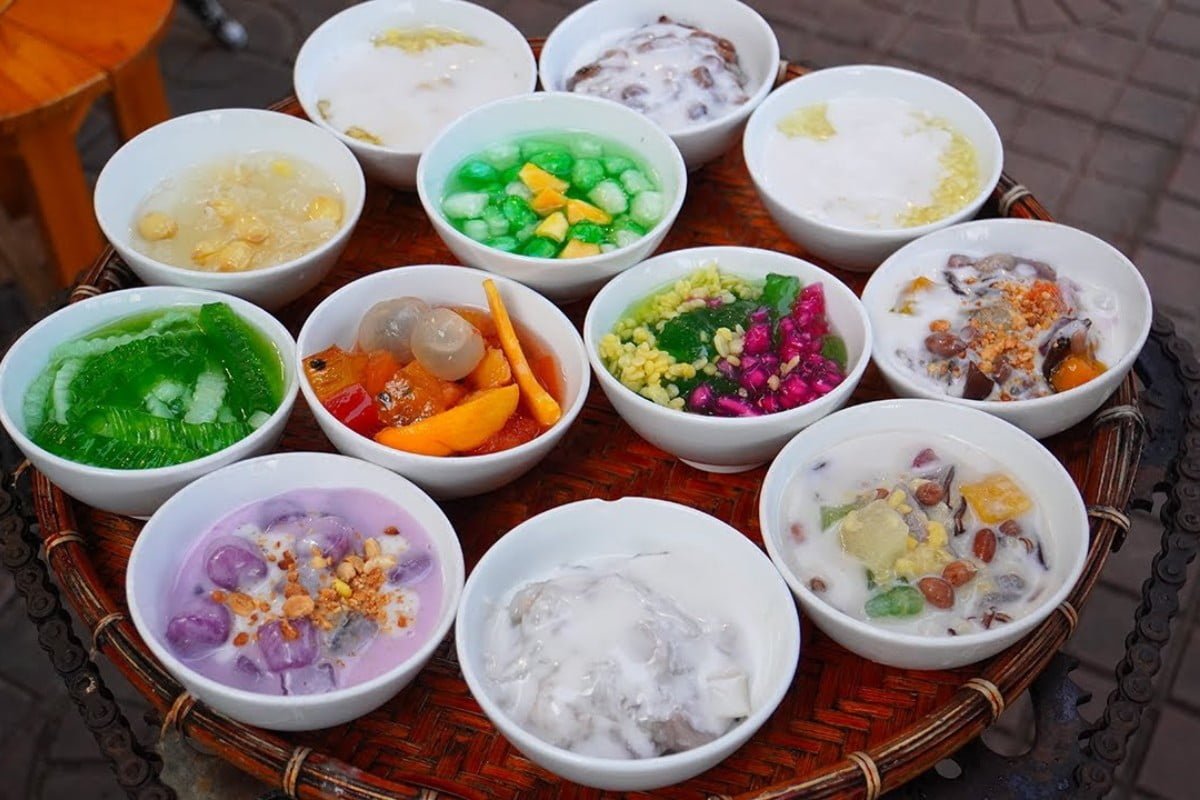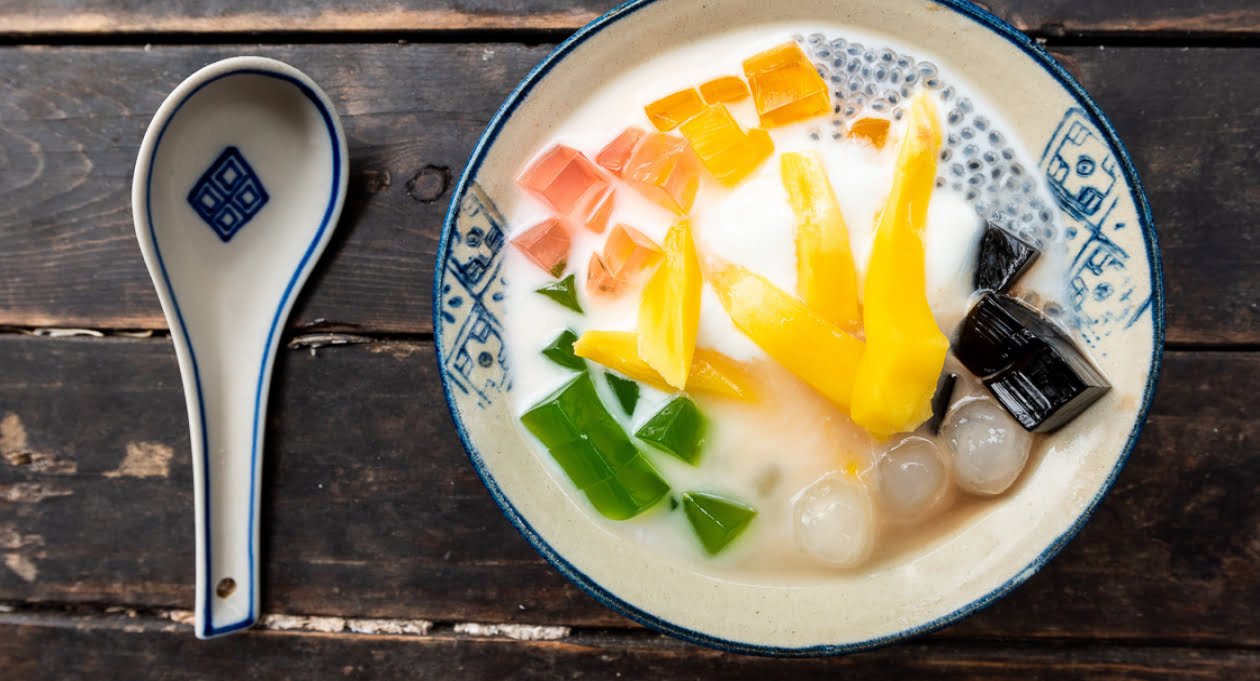Vietnamese dessert culture reflects a fusion of influences from traditional Vietnamese ingredients like coconut milk and tropical fruits with French colonial pastries, offering a diverse array of sweet treats ranging from sticky rice cakes to flan and che.
The Sweet Success of Vietnamese Exports: How They’re Changing the Global Dessert Scene
Vietnamese cuisine has gained immense popularity worldwide, and it’s not just the savory dishes that are making waves. Vietnamese desserts are also capturing the hearts and taste buds of people around the globe. From traditional treats to innovative creations, Vietnamese desserts offer a unique and delightful experience.
In this blog post, we will explore the roots of Vietnamese dessert culture, the role of Vietnamese exports in the global dessert scene, the transformation of traditional desserts with Vietnamese ingredients, the rise of Vietnamese-inspired dessert trends, the impact of Vietnamese dessert startups on the industry, the economic impact of Vietnamese dessert exports, the challenges faced by exporters, and the future opportunities and obstacles for Vietnamese dessert exports.
Exploring the Roots of Vietnamese Dessert Culture
Vietnamese dessert culture is deeply rooted in the country’s history and traditions. Traditional Vietnamese desserts are often made with simple ingredients such as rice, coconut milk, and fruits. These desserts are not only delicious but also hold cultural significance. For example, “che” is a popular Vietnamese dessert made with various ingredients such as beans, jelly, and fruits. It is often served during special occasions and festivals as a symbol of good luck and prosperity.
Another traditional Vietnamese dessert is “banh da lon,” also known as “pandan cake.” This vibrant green cake is made with pandan leaves, which give it a unique flavor and aroma. Pandan leaves are commonly used in Vietnamese cooking and are known for their sweet fragrance. The use of pandan in desserts adds a distinct flavor that sets Vietnamese desserts apart from others.
The Role of Vietnamese Exports in the Global Dessert Scene
Vietnamese dessert exports have been steadily increasing over the years, contributing to the global dessert market. The demand for Vietnamese desserts has grown as people around the world become more adventurous with their culinary choices. Vietnam’s rich food culture and unique flavors have caught the attention of dessert enthusiasts, leading to an increase in exports.
Vietnam is known for its high-quality ingredients, such as coconut, jackfruit, and coffee. These ingredients are not only used in traditional Vietnamese desserts but also in innovative creations that cater to international tastes. Vietnamese dessert exports have expanded beyond traditional treats and now include products like coconut milk, coffee beans, and flavored syrups. These exports have not only introduced Vietnamese flavors to the world but have also created new opportunities for local farmers and producers.
How Vietnamese Ingredients are Transforming Traditional Desserts
Vietnamese ingredients such as pandan, coconut, and jackfruit are being used to transform traditional desserts into unique and flavorful creations. Pandan, with its distinct aroma and vibrant green color, adds a refreshing twist to classic desserts like cakes and puddings. Coconut, with its creamy texture and tropical flavor, is a staple ingredient in many Vietnamese desserts. It is used in various forms, including coconut milk, shredded coconut, and coconut cream.
Jackfruit is another popular ingredient in Vietnamese desserts. Its sweet and tropical taste pairs well with other flavors and adds a delightful texture to dishes. Jackfruit is often used in desserts like “che” and “banh chuoi,” a banana cake made with jackfruit and coconut milk.
These Vietnamese ingredients not only enhance the taste of traditional desserts but also add a touch of uniqueness that sets them apart from other cuisines. The combination of familiar flavors with exotic ingredients creates a memorable experience for dessert lovers.
The Rise of Vietnamese-Inspired Dessert Trends
Vietnamese-inspired dessert trends are emerging in the food industry as people seek new and exciting flavors. Chefs and food enthusiasts are experimenting with Vietnamese ingredients and techniques to create innovative desserts that blend traditional flavors with modern twists.
One popular Vietnamese-inspired dessert trend is the use of condensed milk in desserts. Condensed milk is a staple ingredient in Vietnamese coffee, and its creamy and sweet flavor has made its way into various desserts. From ice creams to cakes, condensed milk adds a rich and indulgent taste to these treats.
Another trend is the incorporation of Vietnamese flavors like lemongrass, ginger, and chili into desserts. These ingredients add a unique and unexpected twist to traditional desserts, creating a fusion of flavors that is both exciting and delicious.
Vietnamese Dessert Startups: Disrupting the Industry
Vietnamese dessert startups are disrupting the dessert industry with their innovative products and creative approaches. These startups are not only introducing Vietnamese flavors to the market but also challenging traditional dessert norms and pushing boundaries.
One example of a successful Vietnamese dessert startup is “Banh Mi Che Cali,” which specializes in Vietnamese-style sandwiches and desserts. They have gained a loyal following by offering unique flavors and high-quality ingredients. Another example is “The Dessert Kitchen,” a chain of dessert cafes that originated in Vietnam and has expanded globally. They offer a wide range of Vietnamese-inspired desserts, including shaved ice, puddings, and sweet soups.
These startups are not only bringing Vietnamese desserts to new markets but also creating opportunities for local producers and suppliers. By sourcing ingredients locally and supporting small-scale farmers, they are contributing to the growth of the Vietnamese economy.
The Impact of Vietnamese Dessert Exports on the Economy
Vietnamese dessert exports have had a significant impact on the country’s economy. The global demand for Vietnamese desserts has created new opportunities for local farmers, producers, and exporters. The export of Vietnamese ingredients like coconut, coffee, and fruits has increased, leading to higher incomes for farmers and improved livelihoods for rural communities.
The growth of the dessert industry has also created jobs in various sectors, including agriculture, manufacturing, and logistics. As the demand for Vietnamese desserts continues to rise, more people are employed in these industries, contributing to economic growth and development.
Furthermore, the export of Vietnamese desserts has helped promote the country’s image and culture on the global stage. Vietnamese cuisine, including desserts, has become synonymous with quality and authenticity, attracting tourists and food enthusiasts from around the world.
The Challenges of Exporting Vietnamese Desserts
While Vietnamese dessert exports have seen significant growth, there are challenges that exporters face in expanding their reach. One major challenge is meeting international food safety and quality standards. Exporters need to ensure that their products meet the strict regulations of importing countries, which can be costly and time-consuming.
Another challenge is establishing distribution networks in foreign markets. Exporters need to find reliable partners and distributors who can effectively market and sell their products. This requires building relationships and understanding the local market dynamics, which can be challenging for small-scale producers.
Additionally, competition in the global dessert market is fierce. Exporters need to differentiate their products and find unique selling points to stand out from the crowd. This requires continuous innovation and staying ahead of emerging trends.
The Future of Vietnamese Dessert Exports: Opportunities and Obstacles
The future of Vietnamese dessert exports holds both opportunities and obstacles. On one hand, the global demand for Vietnamese flavors and ingredients is expected to continue growing as people become more adventurous with their culinary choices. This presents an opportunity for exporters to expand their reach and introduce new products to the market.
On the other hand, exporters will need to overcome obstacles such as increasing competition and changing consumer preferences. As more countries embrace Vietnamese flavors, local producers in those countries may start producing similar products, creating a more competitive landscape.
Furthermore, exporters will need to adapt to changing consumer preferences and dietary trends. With an increasing focus on health and wellness, there is a growing demand for healthier dessert options. Exporters will need to innovate and develop products that cater to these preferences while still maintaining the authentic flavors of Vietnamese desserts.
Tips for Incorporating Vietnamese Ingredients into Your Dessert Recipes
If you’re looking to incorporate Vietnamese ingredients into your dessert recipes, here are a few tips to get you started:
1. Experiment with flavors: Vietnamese ingredients like pandan, coconut, and jackfruit have unique flavors that can add a new dimension to your desserts. Try using pandan extract in cakes or coconut milk in puddings to give your desserts a Vietnamese twist.
2. Balance sweetness: Vietnamese desserts often have a delicate balance of sweetness. Use natural sweeteners like palm sugar or honey to achieve the right level of sweetness without overpowering the flavors.
3. Play with textures: Vietnamese desserts often feature a combination of textures, such as soft and chewy or creamy and crunchy. Incorporate different textures into your desserts by adding ingredients like beans, nuts, or shredded coconut.
4. Use fresh ingredients: Vietnamese desserts are known for their use of fresh and seasonal ingredients. Whenever possible, use fresh fruits and herbs to enhance the flavors of your desserts.
5. Be creative: Don’t be afraid to experiment and create your own unique Vietnamese-inspired desserts. Combine traditional Vietnamese flavors with your favorite dessert recipes to create something truly special.
The Sweet Success of Vietnamese Desserts and Their Global Impact
In conclusion, Vietnamese desserts are gaining popularity worldwide due to their unique flavors, cultural significance, and innovative approaches. Vietnamese dessert exports have contributed to the global dessert market, introducing new flavors and ingredients to consumers around the world. The use of Vietnamese ingredients has transformed traditional desserts into exciting creations that blend familiar flavors with exotic twists.
Vietnamese-inspired dessert trends are emerging in the food industry, challenging traditional norms and pushing boundaries. Vietnamese dessert startups have disrupted the industry with their innovative products and creative approaches, contributing to the growth of the Vietnamese economy.
While there are challenges in exporting Vietnamese desserts, there are also opportunities for growth and expansion. The future of Vietnamese dessert exports holds promise as the global demand for Vietnamese flavors and ingredients continues to rise. By incorporating Vietnamese ingredients into your dessert recipes, you can add a unique and delightful twist to your creations.
Overall, Vietnamese desserts have made a sweet success in the global dessert scene, leaving a lasting impact on the culinary world.
Originally posted 2024-01-28 09:45:11.



